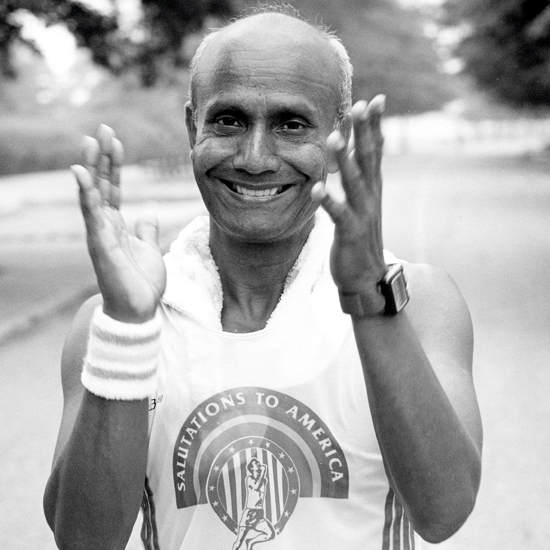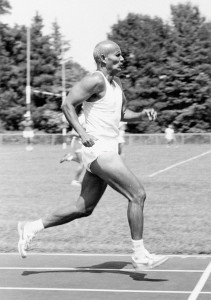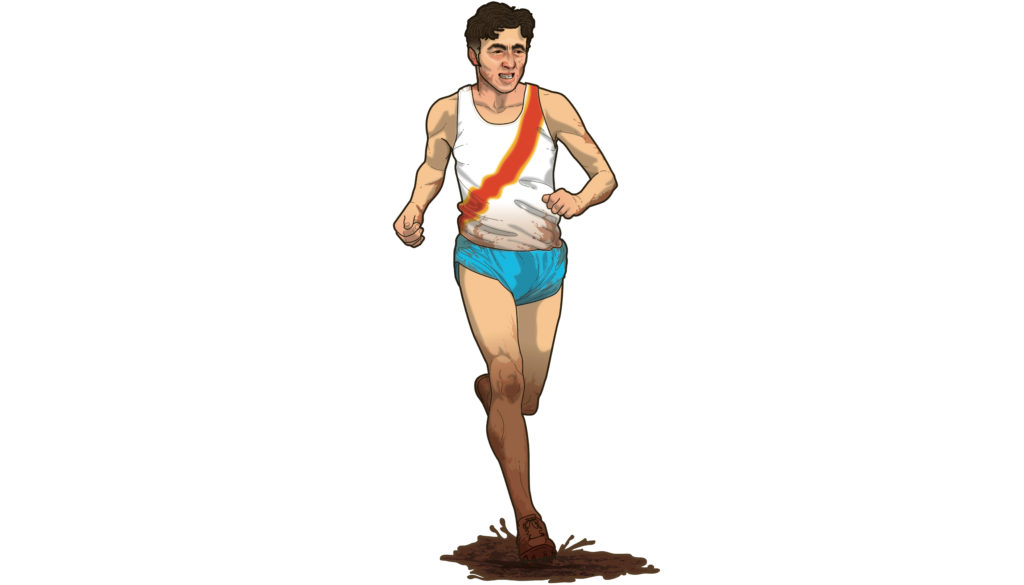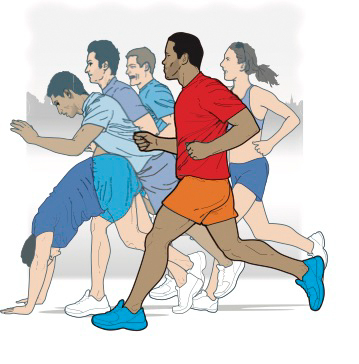
In 2002, while on holiday in New Zealand, a 12-stone Bangladeshi man lifted 1,000 lambs over his head, followed a couple of days later by several hundred cows. That man was Sri Chimnoy: spiritual leader-turned-strongman extraordinaire who, for the previous 38 years, had spent his life promoting world peace and championing the mind’s ability to overcome physical limits. His first love, though, was running.
Chinmoy pioneered an approach to physical endurance that made it seem both accessible and, perhaps more significantly, essential to self-fulfillment and inner peace. It was the marathon, in particular, that he viewed as a pathway to spiritual enlightenment. His mantra was “run and become, become and run.” Running, he felt, has the capacity to push boundaries like nothing else.
Message from within
Chinmoy Kumar Ghose moved from Bangladesh to New York in 1964, after receiving a “message from within” telling him to travel West, in order to help those in search of contentment and spiritual fulfillment. For the next 43 years, he influenced thousands with his teachings of self-transcendence: the belief that one can overcome perceived limits and boundaries through spiritual contemplation and realisation. Naturally, such a belief soon made an impact among New York’s running community.
 In 1977, Chimnoy and his followers founded the Sri Chinmoy Marathon Team. The group, which still stages various sporting events around the world, created the Self-Transcendence 3100 Mile Race – the world’s longest certified footrace. The event, entirely in keeping with Chinmoy’s ideas of mental fortitude and perseverance, is unlike any other. Described by the New York Times as the “Mount Everest of ultramarathons”, it requires runners to repeat a half-mile route around a residential block in Queens, averaging 59.6 miles per day, for a staggering 52 days.
In 1977, Chimnoy and his followers founded the Sri Chinmoy Marathon Team. The group, which still stages various sporting events around the world, created the Self-Transcendence 3100 Mile Race – the world’s longest certified footrace. The event, entirely in keeping with Chinmoy’s ideas of mental fortitude and perseverance, is unlike any other. Described by the New York Times as the “Mount Everest of ultramarathons”, it requires runners to repeat a half-mile route around a residential block in Queens, averaging 59.6 miles per day, for a staggering 52 days.
Chinmoy also founded Peace Miles – worldwide, one-mile events aimed to offer runners and walkers a focused loop dedicated to peace – and the Peace Run, a global relay launched in 1987 to promote friendship and understanding. Former holders of the symbolic relay torch include the likes of Mother Teresa and Nelson Mandela. It didn’t take long for Chinmoy to attract a large following, from a diverse range of professions. Musicians, artists, political leaders and athletes adopted his meditative techniques and spiritual, self-fulfilling beliefs to help push beyond previous ideas of capability.
One of the most famous sportsmen of all time, Carl Lewis, sought Chinmoy’s advice. Following Chinmoy’s death in 2007, Lewis paid tribute, saying: “His life was all about challenging yourself and being the best you can be.”
Heavy lifting
 The propensity for sport to push the mind and the body to the absolute limit was something that both fascinated and inspired Chinmoy. Although a committed runner, his most remarkable achievements came in the aforementioned world of weightlifting. Along with a penchant for lifting bovine animals, he also completed a 453kg dumbbell bench press and 13,000 sit-ups in 2hrs 40mins. More staggering still, he lifted a series of increasingly heavy cars, a seaplane, a helicopter, two elephants and, naturally, a barbershop scene involving four chairs, four barbers, and two pianists playing Beethoven’s Fifth Symphony on two grand pianos.
The propensity for sport to push the mind and the body to the absolute limit was something that both fascinated and inspired Chinmoy. Although a committed runner, his most remarkable achievements came in the aforementioned world of weightlifting. Along with a penchant for lifting bovine animals, he also completed a 453kg dumbbell bench press and 13,000 sit-ups in 2hrs 40mins. More staggering still, he lifted a series of increasingly heavy cars, a seaplane, a helicopter, two elephants and, naturally, a barbershop scene involving four chairs, four barbers, and two pianists playing Beethoven’s Fifth Symphony on two grand pianos.
The mind, as Chinmoy demonstrated, is a wonderful thing. And, trained in the right way, it can transcend the toughest of physical obstacles. For the runner, there can surely be no greater encouragement than that.






